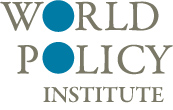Cogito Ergo Non Serviam
US Economy Adds Just 114,000 Jobs in July
The Bureau of Labor Statistics came out with the July jobs report this morning, the Non-Farm Payrolls. It showed the economy produced 114,000 jobs and the unemployment rate rose from 4.1% to 4.3%. This was below expectations of 176,000, and it was below the 150,000 that analysts say is needed to keep up with population growth. It also had the stock market selling off. It is now clear that the Fed has waited too long to cut rates and that September will see a cut that might well be inadequate. The real problem is that any cut in September will take until late spring to cycle through the economy. It could already be too late.
The Fed has an inflation target of 2%, which is ridiculous in a world where terrorism, disease and war can lock up the whole economy in a matter of minutes. Slightly higher inflation keeps the economy running a little hotter which makes it more resistant to these pressures. The Fed disagrees. But the Fed is wrong. Back in June, Forbes ran a piece arguing that the strength of Non-Farm Payrolls was misleading, that all other indicators pointed to a weaker jobs market. Well, here it is.
Given that unemployment is at a level that history calls full employment and given that the economy ran for two years below current levels, it is safe to say that a few slow months of job growth will not destroy the world. But it is clearly a sign that the Fed is using benchmarks that no longer apply. There was a time, back when the Phillips Curve was credible, when high inflation meant low unemployment and vice versa. The curve has clearly shifted, however, and both at are historically low levels.
Ronald Reagan beat Jimmy Carter in the 1980 election in part over inflation and unemployment. The US was adjusting still to the end of the Bretton Woods financial system and the oil embargo brought on by excessively pro-Israeli polities in the Middle East. The term then was “misery index,” the sum of the current inflation rate and the current rate of unemployment. In those days, the misery index peaked at 21.98 in June 1980. Today, that figure is 6.6%, a vastly different landscape. The Fed has more room to maneuver.
Yet, the people at the Fed seem to think that it is August 1980 and not August 2024. Inflation is done. The current wave was brought on by an ill-advised tax cut, survival payments to households during the pandemic, and the sudden re-opening of the economy before the factories had geared up after the pandemic. A tax increase would have sorted it all out, but fiscal policy is no longer an option for economists. So, the world is left with higher interest rates and hope that the inflation rate comes down to 2%.
What the Fed has not paid any attention to is the overall health of the employment market. Yes, there are jobs, lots of jobs. There are so many jobs that some people have two or three and still cannot make ends meet. In the focus on inflation, they have deliberately broken the back of the labor market. The Fed governors are on record as saying they can cut rates when the job figures show a significant cooling off from where they were.
But the Fed has never allowed for the amount of time it takes for rate changes to cycle through the economy. They could have cut rates at any time in the last several months but held their fire to make sure they tamed inflation. They have done so, but the economy still operates under the conditions of the last rate hike. Rates have been stable for months, but inflation kept falling and now joblessness is rising.
It looks like the cut will be too little, too late when it comes. Much as this journal predicted.
© Copyright 2024 by The Kensington Review, Jeff Myhre, PhD, Editor. No part of this publication may be reproduced without written consent. Produced using Ubuntu Linux.

|
